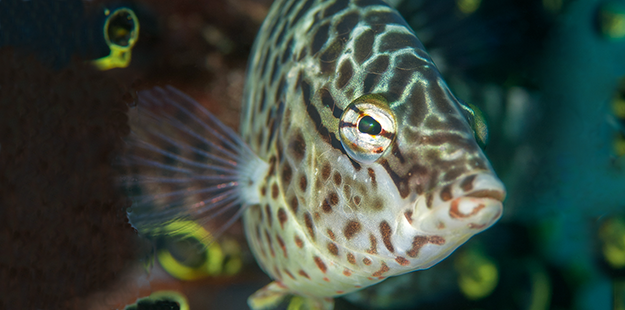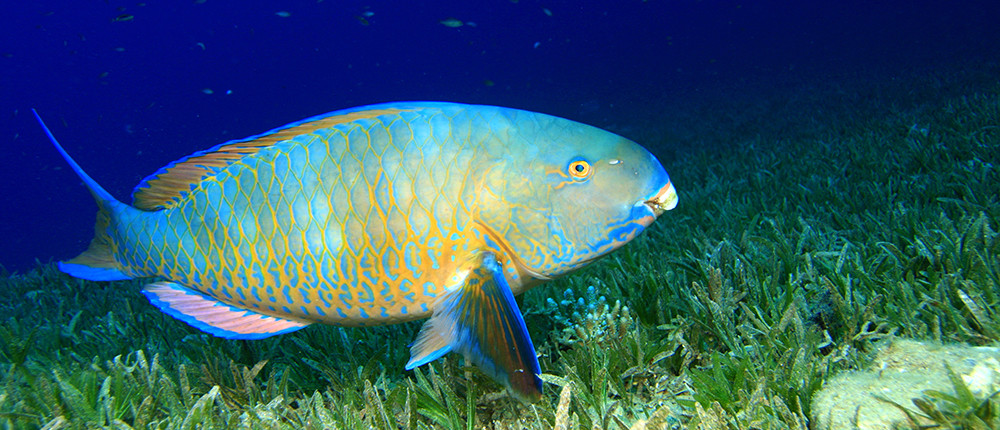Coming of Age

Juvenile Napoleon wrasse tend to prefer a more cryptic existence in areas of dense branching corals, sheltered lagoons and bays adjacent to the reef, or seagrasses. Photo by Richard Smith, facebook/richardsmith
Changing with the territory
Youth isn’t always the most flamboyant time of life. In some species, the juvenile’s colors will be duller than the adults. The young Napoleon wrasse is not easily recognized as being the same species as the iconic adult, as it differs both in color and body shape. The slender juvenile lacks the adult’s vivid green shades, facial ornamentation and distinctive forehead bump, and instead sports a mottled brown pattern. This serves them well as they grow in sheltered lagoons and bays adjacent to the reef, where their skin tones blend with the marl and rubble of the shallows. When they reach a size of around one foot in length, Napoleon wrasses will move to the reef, where they will spend rest of their life. This change of venue prompts a corresponding change in appearance.
“Sadly, Napoleon wrasse are highly prized in the Asian fish markets and have been listed as endangered by the IUCN in an attempt to protect them,” says Dr. Richard Smith
Adult Napoleon wrasses are predominantly green, with tinges of blue. These colors have been found to provide effective camouflage for them while living in reef habitats. When viewed horizontally by predators through the water column, they are almost indistinguishable from the background. These same colors may also help render the fish invisible in shallow water from aerial attack when viewed from above by avian predators such as sea eagles. Sadly, Napoleon wrasse are highly prized in the Asian fish markets and have been listed as endangered by the IUCN in an attempt to protect them. No take zones, such as the one protecting many kilometres of reef surrounding Wakatobi Resort, also help provide sanctuary to these stunning fish.

Larger individuals and adult Napoleon wrasses prefer to occupy limited home ranges in more open habitat on the edges of reefs, channels, and reef passes. Photo by Richard Smith
For some fish on Wakatobi’s reefs, age represents a retreat from the flamboyance of youth to more mundane hues of adulthood. But for others, maturity brings out new and brighter patterns. Let’s hope we can follow the ways of the latter group as we move into our well-earned golden years.
Time to see for yourself? Contact us at office@wakatobi.com or complete a quick trip inquiry at wakatobi.com. A guest experience consultant will be in touch with you to answer your questions and provide information about your next dream dive vacation–to Wakatobi.
Follow us on Facebook.


